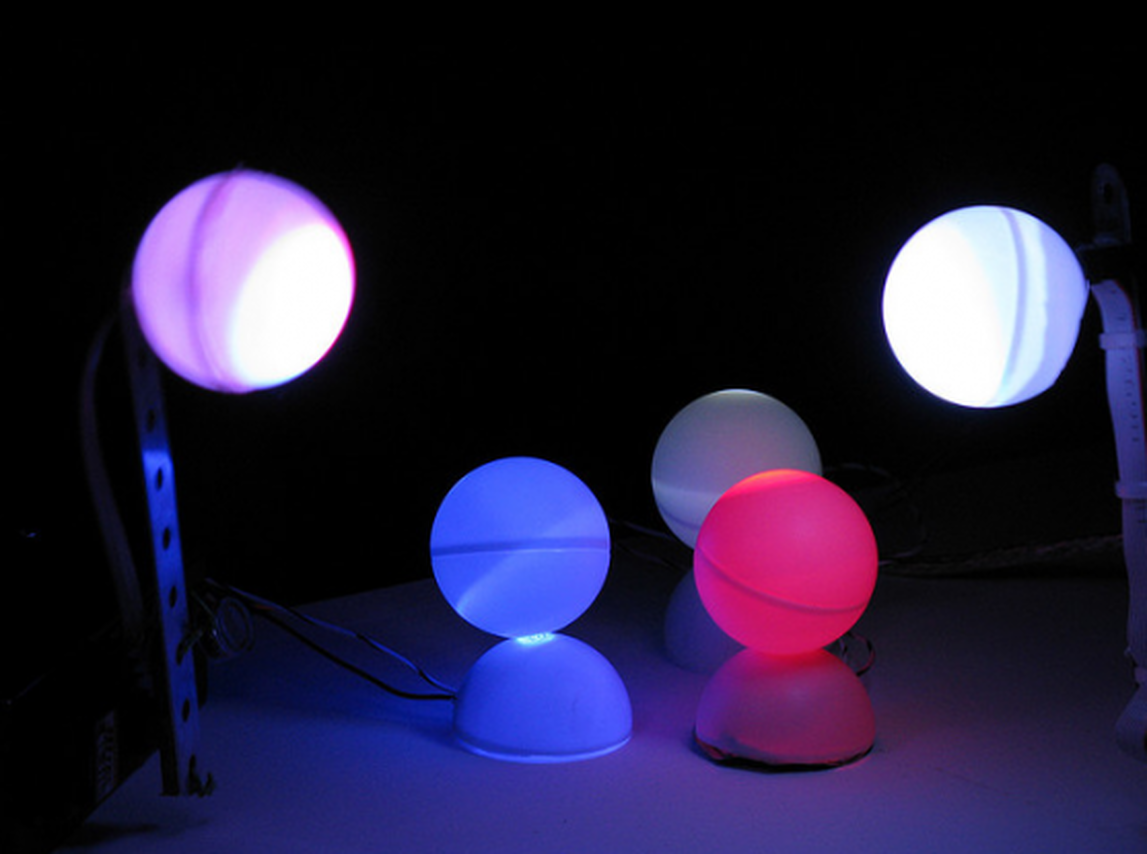brian degger
Brian Degger joined D6 in 2008 for a 3-week research residency. During his residency, he was researching interspecies communication, and building devices that communicate with each other using light and movement. The devices were exhibited during CONNECTING PRINCIPLE 08 - DIALOGUE (13th-14th November, Newcastle University).
"Finished trialling my light-responsive objects that I developed at the AA2A placement and the D6 residency. My motivation was to make a work that encoded knowledge of natural systems, to create a gentle empathy in the viewer. Over time these devices have transformed themselves in my eyes into pets, or dependant creatures. Although simple, they are evocative, they have metaphorical attachment points for anthropomorphism.Some of the verbal reactions to the work are that they are “sweet”, “cute”, “life-like”. So as well as a model system to learn about interaction, they are also a site of inquiry into human relationships with machines.
Approximately thirty people came to the work during ‘Feeding Times” at the tic space at the Fine Arts School of Newcastle University. This was part of Connecting Principle 2008 event. As the theme was Dialogue, it was apt that this gave me the opportunity to discuss the work, its future directions and get feedback from a diverse audience.
The work is a series of light producing and responsive devices. By having more than one, a feedback loop comes into being, where the movement of one causes changes in the local light environment that produces a movement in the other, ad infinitum...
In this first installation, the 3 Arduino devices share power through a mains powered usb hub and it is apparent that there are fluctuations in the power supply. This could be removed by separate power supplies, but this would remove some of the glitchiness and perhaps the idiosyncrasies that make this work appealing."
ABOUT THE ARTIST
Dr Brian Degger is a new media artist and interdisciplinary researcher, with a doctorate in biotechnology. His investigations (speculative research) occur in the artscience domain (i.e. Biological art, kinetic sculptures and robotics), where artworks are also an open ended experiment.
Visit Brian's website here: www.briandegger.co.uk
"Finished trialling my light-responsive objects that I developed at the AA2A placement and the D6 residency. My motivation was to make a work that encoded knowledge of natural systems, to create a gentle empathy in the viewer. Over time these devices have transformed themselves in my eyes into pets, or dependant creatures. Although simple, they are evocative, they have metaphorical attachment points for anthropomorphism.Some of the verbal reactions to the work are that they are “sweet”, “cute”, “life-like”. So as well as a model system to learn about interaction, they are also a site of inquiry into human relationships with machines.
Approximately thirty people came to the work during ‘Feeding Times” at the tic space at the Fine Arts School of Newcastle University. This was part of Connecting Principle 2008 event. As the theme was Dialogue, it was apt that this gave me the opportunity to discuss the work, its future directions and get feedback from a diverse audience.
The work is a series of light producing and responsive devices. By having more than one, a feedback loop comes into being, where the movement of one causes changes in the local light environment that produces a movement in the other, ad infinitum...
In this first installation, the 3 Arduino devices share power through a mains powered usb hub and it is apparent that there are fluctuations in the power supply. This could be removed by separate power supplies, but this would remove some of the glitchiness and perhaps the idiosyncrasies that make this work appealing."
ABOUT THE ARTIST
Dr Brian Degger is a new media artist and interdisciplinary researcher, with a doctorate in biotechnology. His investigations (speculative research) occur in the artscience domain (i.e. Biological art, kinetic sculptures and robotics), where artworks are also an open ended experiment.
Visit Brian's website here: www.briandegger.co.uk

